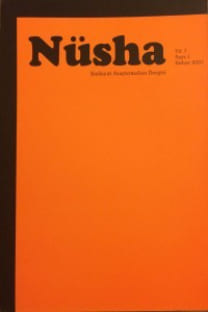ARAPÇA İSİM CÜMLESİNDE SÖZDİZİM VE ANLAMSAL YORUMA BİR BAKIŞ
Bu çalışmada Arapça isim cümlesindeki yapılar ve salt bu yapılardan ortaya çıkan anlamsal yorumlar üzerinde durulacaktır. Diğer bir ifade ile isim cümlesinin sözdiziminde meydana gelen değişiklerin anlamsal yoruma etkileri incelenecektir. Bir cümlenin anlamsal yorumu yapılırken, kelimelerin sözlük anlamı, işlevsel anlamı ve cümlenin ortaya çıktığı bağlam gibi göz önünde bulundurulması gereken birçok unsur vardır. Kelimelerin anlamları cümledeki kullanımlarıyla az çok belirlenmektedir. İşlevsel anlamların cümleye katkısı, kelimelerin gramatik görevlerinin belirlenmesiyle cümlenin anlamının belirlenmesine sunduğu katkıdır. Bağlamlar ise sınırsız olduğu için cümlenin anlamının belirlenmesi için bağlamla ilgili genel geçer kuralların belirlenmesi oldukça güçtür. Bu makalede isim cümlesi çerçevesinde salt söz dizimden çıkan ve ileride zikredilecek olan isim cümlesi yapılarının anlamsal yorumu belirlenmeye çalışılacaktır. Her yapı için ortaya çıkan sözdizimsel anlamın genel geçer bir durum olduğu, aynı yapıda kurulan her cümlenin aynı sözdizimsel anlama sahip olduğu gösterilmeye çalışılacaktır. Arapça isim cümlesi, kelimelerin işlevsel anlamları değişmeksizin, değişik sözdizimlerinde kurulabilir. Bu yapısal değişiklerin anlama yansıması kaçınılmazdır. Bazı cümle yapıları, yargının sadece hakkında konuşulan kişi-ye/nesneye has kılar. Diğer bazı yapılar muhatabın, verilen yargının bir kısmından haberdar olduğunu gösterir. Bazı isim cümlesi yapıları ise muhatabın zihnindeki bazı şüpheleri izale eder. Pekiştirme ifade eden yapılar da mevcuttur. Ayrıca haberin isim olarak gelmesi, fiil olarak gelmesi, marife olarak gelmesi, nekra olarak gelmesi, ayrı ayrı anlamlara delalet etmektedir.
Anahtar Kelimeler:
Arapça, İsim Cümlesi, Sözdizim, Anlamsal Yorum, Cümle Yapısı
A Look at Syntax and Seaningal Interpretation in the Arabic Name Sentence
In this study, the structures in the Arabic noun sentence and the semantic interpretations that arise only from these structures will be discussed. In other words, the effects of the changes in the syntax of the noun sentence on the semantic interpretation will be examined. When making a semantic interpretation of a sentence, there are many factors that need to be considered, such as the dictionary meaning of the words, its functional meaning, and the context in which the sentence originates. The meanings of the words are determined by their usage in the sentence. Functional meanings are seen by determining the grammatical role of the words in the sentence thus functional meanings contribute to the general meaning of the sentence. Since the contexts are unlimited, it is very difficult to reach general rules about the context in order to determine the meaning of the sentence. In this paper, the structures in the Arabic noun sentence and the semantic interpretations that arise only from these structures will be discussed. It will be tried to show that the syntactic meaning that emerges for each structure is a common situation, and that every sentence formed in the same structure has the same syntactic meaning. The Arabic noun phrase can be established in different syntaxes without changing the functional meanings of the words. These structural changes will surely be reflected in the semantic interpretation of the sentence.
Keywords:
Arabic, Noun Sentence, Syntax, Semantic Interpretation, Sentence Structure.,
___
- Aksan, Doğan (2000). Her yönüyle dil ana çizgileriyle dilbilim, Ankara: Türk Dil Kurumu Yayınları.
- Akdemir, Hikmet (1999). Belağat terimleri ansiklopedisi, İzmir: Nil Yayınları.
- Bulut, Ali (2015). Belāgat terimleri sözlüğü, İstanbul: İFAV.
- Chomsky, Noam (2002). Syntactic structures, New York: Mouton de Gruyter.
- Cürcānī, Abdukāhir (1992). Delāilu’l-ʿicāz, (Nşr. Mahmūd Muhammed Şākir), Kahire: Mat-baʿatu’l-Medenī.
- Finegan, Edward (1994). Language its structure and use, Florida: Harcourt & Company.
- el-Haşimī, es-Seyyid Ahmed (2002). Cevāhiru’l-belāğa, Kahire: el-Mektebetu’l-ʿAsriyye.
- İbnu’l-Esīr, Ebu’l-Feth Ziyāuddīn Nasrullāh b. Muhammed b. Muhammed eş-Şeybānī el-Cezerī (2010). el-Meselu’s-sāir fī edebi’l-kātib ve’ş-şāir,(Neşr. Muhammed Muh-yiddin Abdulhamīd), Beyrut: el-Mektebetu’l-ʿAsriyye.
- el-Kazvīnī, Celāluddīn Muhammed b. Abdurrahmān (2017). Telhīsu’l-miftāh, İstanbul: Şifa Yayınevi.
- es-Sāmerrāī, Fādıl Sālih (2010). Meʿāni’n-nahv, Amman: Dāru’s-Selātīn.
- es-Sekkākī, Ebū Yaʿkūb Yusuf b. Muhammed b. Ali (2014). Miftāhu’l-ʿulūm, (Neşr. Abdul-hamīd Hindāvī), Beyrut: Dāru’l-Kutubi’l-ʿİlmiyye.
- Yule, George (1998). The study of language, Cambridge: Cambridge University press.
- ISSN: 1303-0752
- Yayın Aralığı: Yılda 2 Sayı
- Başlangıç: 2001
- Yayıncı: Oku A.Ş.
Sayıdaki Diğer Makaleler
SADİ-Yİ ŞİRAZÎ’NİN AŞK VE SABIR KONULU TERCİİBENDİ
KABUL VE RED AÇISINDAN KUR'ÂN-I KERÎM'DE MECÂZ KONUSUNUN DEĞERLENDİRİLMESİ
KABUL VE RED AÇISINDAN KUR'ÂN-I KERÎM'DE MECÂZ KONUSUNUN DEĞERLENDİRİLMESİ
MU‘ALLİM FEYZÎ; HAYATI, ESERLERİ VE FARSÇA ÖĞRETİMİNDEKİ YERİ VE ÖNEMİ
DİL KULLANIMINDA BENZETMELERİN ROLÜ (ARAPÇA VE TÜRKÇE ÖRNEĞİ
Emad A.A.ALY, Serkut Mustafa DABBAGH
KAÇAR DÖNEMİNİN BAŞ RESSAM VE BAŞ MÜZEHHİPLERİ
ARAP HARFLERİNİN KÖKENİ VE BU KÖKENE DAİR KUR’ÂN’DAN BAZI ÖRNEKLER
KABUL VE RED AÇISINDAN KUR'ÂN-I KERÎM'DE MECÂZ KONUSUNUN DEĞERLENDİRİLMESİ
ORYANTALİST OSKAR MANN’IN (1867–1917) OSMANLI SEYAHATİ MEKTUPLARINDA ZAZACANIN TASNİFİ
